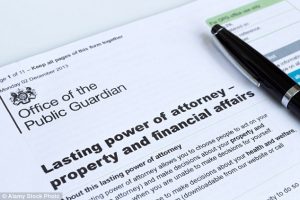
Commercial Leases – A Short Guide
Entering into a lease for commercial promises can be a daunting prospect for any continuing or start-up business. There are many things to think about and here at Dickinson Parker Hill Solicitors we have been advising our clients on commercial leases for many years.
Our Commercial Property Department has put together this helpful guide to help you focus on some of the main issues you will need to consider.
Also read: Break clauses for landlords and tenants
1. Registration
If your lease is going to be for more than 7 years or more then it must be registered with HM Land Registry. This also applies if you are taking on/transferring the unexpired term of an unregistered lease and there is still 7 years or more left to run.
2. Heads of Terms
The Heads of Terms set out the key points that have been agreed between the parties. Issues like rent, length of lease, extent of property to be leased and rent reviews should be covered.
These can be negotiated directly or you may have instructed a surveyor or other specialist to negotiate on your behalf. Here at Dickinson Parker Hill Solicitors in Ormskirk, we would always recommend that you speak to one of our specialist commercial property solicitors before agreeing the Heads of Terms.
You will need a land registry compliant plan for the property so it can be registered and you may need to instruct a surveyor to help you with this.
3. Stamp Duty
You will need to calculate whether or not you will have to pay Stamp Duty Land Tax if you take on the lease. Our solicitors will be able to advise if this is the case if you are not yet sure.
General Points to Consider
- Are the rights to be granted to you sufficient for your purpose?
- Are the rights reserved in favour of the landlord potentially too disruptive for your proposed use of the property?
- Have you agreed the frequency of rent reviews? Often this is at the end of every fifth year of the term, although some landlords may ask for rent reviews every three or four years.
- Do you need a break clause allowing you to bring the lease term to an early end? If so, and if this is agreed by the landlord, then you should ensure that only the bare minimum of conditions are attached to the break right. Ideally six months’ notice in writing to the landlord should suffice. However, a landlord will often require pre-conditions such as payment of rent and giving up the property with vacant possession on the break date. What you should always resist is any proposal by the landlord that the break can only be exercised if you have complied with the covenants in the lease – this is almost impossible to achieve!
- Will you have the right to assign the lease and/or sublet the property?
- Will there be a service charge? If so, try to ensure that this is capped at an agreed level in every year.
- Is the business use allowed under the lease also an authorised planning use? You do not want to face enforcement by the local authority.
- Will you have sufficient rights to erect signage so that you can announce your presence in the building?
- Is the property in less than perfect condition? Then you should aim to agree that your repairing and decorating obligations will be judged against a schedule of condition and that you are not obliged to put the property in any better state of repair or condition than that described in the schedule.
Do not make the mistake of thinking that an easy way to save money is to avoid talking to a solicitor about the lease. Taking proper advice is essential if you want to ensure you understand the obligations you are taking on and the risks involved.
If you would like assistance with a commercial lease, then please call our offices on 01695 574 201 or 01704 504381 or email us.



